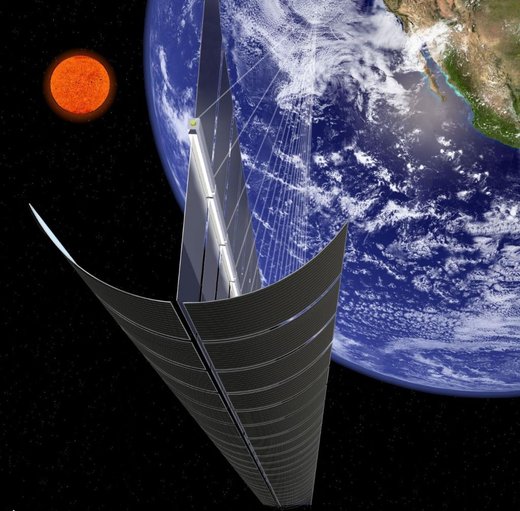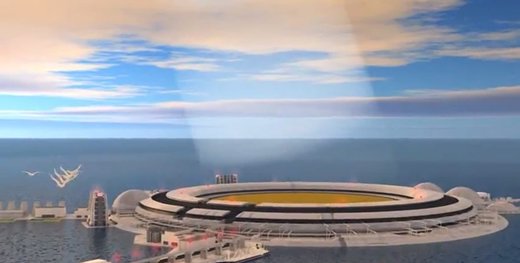2 October 2013
Japan, the country that pursued nuclear energy so confidently, has now embarked on a mission to beam solar power direct to earth. Rod Sweet reports
What if you could get an array of mirrors positioned in geostationary orbit to collect solar energy from the sun and beam it down to a power plant on the ground via microwaves or laser beams to generate electricity?
Well, that’s exactly what Japan is trying to do and its space agency, JAXA, is aiming to set up a “space solar power system” (SSPS) by the 2030s.
Perhaps more than any other developed country, Japan needs to rethink its energy supply after the earthquake and tsunami in March 2011 caused a meltdown at the Fukushima Daiichi Nuclear Power Plant.
Without nuclear Japan must import nearly all its energy and, with the future of its nuclear industry in question, it’s no wonder the country is looking to the stars.
Yasuyuki Fukumuro leads research and planning for JAXA’s SSPS program.
“We have not yet decided whether to use microwaves or laser beams with SSPS, or whether we will somehow combine them,” he says in an interview on JAXA’s website. “We are currently conducting ground-based experiments to find the most efficient way to transmit energy.”

Artist’s rendering of a solar collection satellite in geostationary orbit (JAXA)
The motivation is strong, however, because the sun is the ultimate renewable resource. “Regardless of which transmission technology we use, when we collect sunlight from outside the Earth’s atmosphere we can get a continuous supply of it, with almost no influence from the weather, the seasons, or time of day.”
As the concept stands now a flat “rectifying antenna” at the receiving site would convert microwaves into electrical energy.
The idea has been around for some time. American scientist Peter Glaser designed a similar concept in 1968 to deploy large solar panels in space to generate power and convert it into microwaves to transmit to the ground.
But studies by NASA and the US Department of Energy concluded the project was too costly.
Mr Fukumuro readily admits the system has its challenges, not least how to control the direction of the microwaves from orbit.
“Transmitting microwaves from an altitude of 36,000 kilometers to a flat surface 3km in diameter is like threading a needle,” he says.
And to build a structure as large as the SSPS in space, Japan will need a new space transport system and sophisticated robots, requiring much more research and development.
Like nuclear power, the space solar concept is also potentially dangerous: how can you prevent unintended zapping?

Artist’s rendering of what happens on Earth (JAXA)
“It is necessary to take strong measures to ensure the safety of living organisms on Earth in case they are exposed to microwave beams that are misaligned with the receiving site on the ground,” he said, adding, “even with weak microwaves, the impact of prolonged exposure on the human body has not yet been fully understood.”
Nevertheless, JAXA is pushing forward.
“We are getting close to the stage where it is feasible, and we have just moved from the study phase to the technology demonstration phase,” Mr Fukumuro said.
“Researchers have started preparation for the world’s first demonstration of 1kW-class wireless power transmission technology, and are aiming for practical use in the 2030s.
“At this point, you could say that Japan is leading the world in SSPS research. I think that this is all thanks to JAXA’s long-term commitment to this research.”
Source: JAXA






